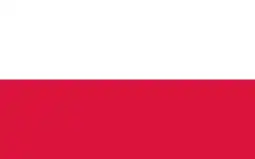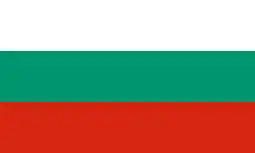Bijelo Polje
Бијело Поље | |
|---|---|
Town and municipality | |
From the top, Bijelo Polje at Night, Church of St. Nicholas, Town Centre | |
 Flag  Coat of arms | |
 Bijelo Polje Location of Bijelo Polje in Montenegro | |
| Coordinates: 43°02′N 19°45′E / 43.04°N 19.75°E | |
| Country | |
| Municipality | |
| Settlements | 98 |
| Government | |
| • Mayor | Petar Smolović (DPS) |
| • Ruling party | DPS - SD |
| Area | |
| • Town and municipality | 924 km2 (357 sq mi) |
| Elevation | 578 m (1,896 ft) |
| Population (2011 census) | |
| • Rank | 6th in Montenegro |
| • Urban | 12,900 |
| • Rural | 30,651 |
| • Municipality | 46,051 |
| Demonym(s) | Belopoljese Bjelopoljci |
| Time zone | UTC+1 (CET) |
| • Summer (DST) | UTC+2 (CEST) |
| Postal code | 84000 |
| Area code | +382 50 |
| ISO 3166-2 code | ME-04 |
| Car plates | BP |
| Climate | Cfb |
| Website | www |
Bijelo Polje (Montenegrin: Бијело Поље, pronounced [bîjɛlɔː pɔ̂ʎɛ]) is a town in northeastern Montenegro on the Lim River. It has an urban population of 12,900 (2011 census). It is the administrative, economic, cultural and educational centre of northern Montenegro.
Bijelo Polje is the center of Bijelo Polje Municipality (population of 46,051). It is the unofficial center of the north-eastern region of Montenegro. Bijelo Polje means 'white field' in Montenegrin.
History

Bijelo Polje's Saint Peter and Paul Church is the place where the UNESCO Miroslav's Gospel of Miroslav, brother of Serbian ruler Stefan Nemanja was written.
During World War II, Bijelo Pole was a prominent location for the anti-fascist resistance movement in Yugoslavia, Montenegro in particular.[1]
Demographics
Bijelo Polje is the administrative centre of the Bijelo Polje municipality, which in 2011 had a population of 46,251. The town of Bijelo Polje itself has 12,900 citizens.
Town
| Year | Pop. | ±% |
|---|---|---|
| 1948 | 3,547 | — |
| 1953 | 4,029 | +13.6% |
| 1961 | 5,856 | +45.3% |
| 1971 | 8,925 | +52.4% |
| 1981 | 11,927 | +33.6% |
| 1991 | 16,464 | +38.0% |
| 2003 | 15,883 | −3.5% |
| 2011 | 12,900 | −18.8% |
Municipality
| Year | Pop. | ±% |
|---|---|---|
| 1948 | 36,795 | — |
| 1953 | 41,432 | +12.6% |
| 1961 | 46,651 | +12.6% |
| 1971 | 52,598 | +12.7% |
| 1981 | 55,634 | +5.8% |
| 1991 | 55,268 | −0.7% |
| 2003 | 50,284 | −9.0% |
| 2011 | 46,051 | −8.4% |
Ethnicity
Source: Statistical Office of Montenegro - MONSTAT, Census 2011[2]
| Ethnicity | Number | Percentage |
|---|---|---|
| Serbs | 15,562 | 33.8% |
| Bosniaks | 14,592 | 31.7% |
| Montenegrins | 7,808 | 16.95% |
| Muslims | 5,985 | 12.99% |
| Romani | 334 | 0.72% |
| Albanians | 57 | 0.12% |
| Croats | 41 | 0.09% |
| Yugoslavs | 27 | 0.06% |
| Other | 454 | 0.98% |
| undeclared | 952 | 2.07% |
| no data | 269 | 0.58% |
| Total | 46,081 | 100% |
Religion
Source: Statistical Office of Montenegro - MONSTAT, Census 2011[3]
Culture and sights
Bijelo Polje was the birthplace of the oral poet Avdo Međedović and of many prominent writers such as Ćamil Sijarić, Miodrag Bulatović, Risto Ratković and Dragomir Brajković as well as basketball player Nikola Peković and Swedish footballing brothers Ajsel and Emir Kujović.
Sports
The major football team is Jedinstvo, who have spent several seasons in the country's top tier. They share their Gradski stadion with lower league team OFK Borac. The town's basketball teams are Jedinstvo and KK Centar.
Transport

Bijelo Polje is connected to the rest of Montenegro by two major roads. It is situated on the main road connecting Montenegro's coast and Podgorica with northern Montenegro and Serbia (E65, E80).
Bijelo Polje is also a station on Belgrade–Bar railway, the last station in Montenegro for trains leaving for Belgrade, and it serves as a regional train station. Podgorica Airport is 130 km (81 mi) away, and has regular flights to major European destinations.
Climate
Bijelo Polje has a humid continental climate (Köppen: Dfb) with warm summers, cold winters, and abundant precipitation year round.
| Climate data for Bijelo Polje (1961–1990, extremes 1950–present) | |||||||||||||
|---|---|---|---|---|---|---|---|---|---|---|---|---|---|
| Month | Jan | Feb | Mar | Apr | May | Jun | Jul | Aug | Sep | Oct | Nov | Dec | Year |
| Record high °C (°F) | 18.0 (64.4) |
27.0 (80.6) |
26.5 (79.7) |
30.8 (87.4) |
33.5 (92.3) |
35.5 (95.9) |
39.0 (102.2) |
39.8 (103.6) |
36.5 (97.7) |
32.0 (89.6) |
25.5 (77.9) |
20.1 (68.2) |
39.8 (103.6) |
| Mean daily maximum °C (°F) | 2.6 (36.7) |
6.4 (43.5) |
11.1 (52.0) |
15.7 (60.3) |
20.8 (69.4) |
23.7 (74.7) |
26.2 (79.2) |
26.4 (79.5) |
22.7 (72.9) |
17.1 (62.8) |
9.7 (49.5) |
3.3 (37.9) |
15.5 (59.9) |
| Daily mean °C (°F) | −1.9 (28.6) |
0.9 (33.6) |
4.7 (40.5) |
9.0 (48.2) |
13.3 (55.9) |
16.0 (60.8) |
17.7 (63.9) |
17.3 (63.1) |
14.0 (57.2) |
9.3 (48.7) |
4.3 (39.7) |
−0.4 (31.3) |
8.7 (47.6) |
| Mean daily minimum °C (°F) | −5.3 (22.5) |
−3.3 (26.1) |
−0.4 (31.3) |
3.1 (37.6) |
7.1 (44.8) |
10.2 (50.4) |
11.5 (52.7) |
11.1 (52.0) |
8.6 (47.5) |
4.5 (40.1) |
0.6 (33.1) |
−3.5 (25.7) |
3.7 (38.7) |
| Record low °C (°F) | −27.6 (−17.7) |
−24.5 (−12.1) |
−18.2 (−0.8) |
−8.6 (16.5) |
−4.0 (24.8) |
−0.8 (30.6) |
1.2 (34.2) |
2.6 (36.7) |
−4.0 (24.8) |
−7.2 (19.0) |
−15.4 (4.3) |
−21.7 (−7.1) |
−27.6 (−17.7) |
| Average precipitation mm (inches) | 79.6 (3.13) |
63.8 (2.51) |
60.8 (2.39) |
79.8 (3.14) |
74.5 (2.93) |
77.5 (3.05) |
68.3 (2.69) |
61.3 (2.41) |
72.7 (2.86) |
73.3 (2.89) |
107.9 (4.25) |
90.8 (3.57) |
910.3 (35.82) |
| Average precipitation days (≥ 0.1 mm) | 12 | 12 | 12 | 13 | 13 | 13 | 11 | 9 | 9 | 9 | 12 | 14 | 139 |
| Average relative humidity (%) | 82 | 76 | 71 | 69 | 72 | 75 | 74 | 74 | 78 | 79 | 82 | 85 | 76 |
| Source: Hydrological and Meteorological Service of Montenegro[4][5] | |||||||||||||
Notable people
.jpg.webp)
- Avdo Međedović, guslar
- Miodrag Bulatović, writer
- Ćamil Sijarić, writer
- Dragomir Brajković, writer
- Risto Ratković, writer
- Nastasja Vojinović, musician
- Milutin Karadžić, actor
- Ajsel Kujović, footballer
- Emir Kujović, footballer
- Duško Ivanović, basketball coach
- Nikola Peković, basketball player
- Predrag Drobnjak, basketball player
- Suad Šehović, basketball player
- Sead Šehović, basketball player
International relations
Twin towns — sister cities
Bijelo Polje is twinned with:[6][7]
 Bila Tserkva, Ukraine[8]
Bila Tserkva, Ukraine[8] Burhaniye, Turkey
Burhaniye, Turkey Hrubieszów, Poland[9]
Hrubieszów, Poland[9] Maardu, Estonia[10]
Maardu, Estonia[10] Strumica, North Macedonia
Strumica, North Macedonia Svishtov, Bulgaria
Svishtov, Bulgaria
References
- ↑ Morrison, Kenneth (2008). Montenegro: A Modern History. I.B.Tauris. ISBN 0857714872.
- ↑ "Popis 2011". Retrieved 2011-09-29.
- 1 2 "Popis 2011". Retrieved 2011-09-29.
- ↑ "Climate: Bijelo Polje" (in Montenegrin). Hydrological and Meteorological Service of Montenegro. Retrieved 7 March 2021.
- ↑ "Dnevni prosjeci i ekstremi" (in Montenegrin). Hydrological and Meteorological Service of Montenegro. Retrieved 7 March 2021.
- ↑ "Gradovi i Opštine pobratimi sa Opštinom Bijelo Polje". bijelopolje.co.me (in Montenegrin). Bijelo Polje. Retrieved 2019-12-28.
- ↑ "Bratimljenje" (PDF). database.uom.me (in Montenegrin). Zajednica opština Crne Gore. January 2013. p. 29. Retrieved 2019-12-29.
- ↑ "Міста-побратими". bc-rada.gov.ua (in Ukrainian). Bila Tserkva. Retrieved 2020-03-29.
- ↑ "Bijelo Polje (Czarnogóra)". miasto.hrubieszow.pl (in Polish). Hrubieszów. Retrieved 2020-03-31.
- ↑ "Maardu partner cooperations". maardu.kovtp.ee. Maardu linn. Retrieved 2019-12-28.
External links
- Visit-Montenegro.com
- Census info, njegos.org; accessed 12 August 2015.


.jpg.webp)